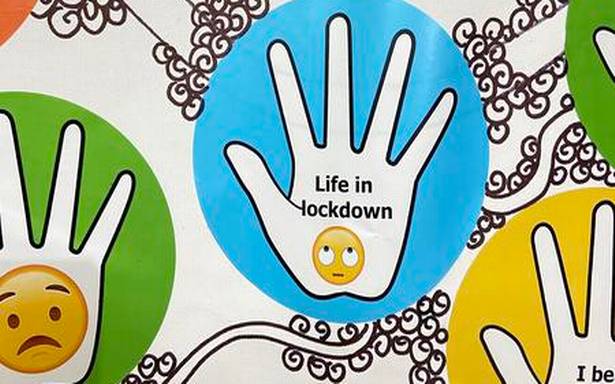Bengaluru artists Shan Re and Romi talk about their work at the ongoing Terrain Biennale
Art has outgrown galleries, fitting into digital formats on our smartphones. Sometimes it occupies public spaces so a larger audience can share in the experience. Visitors to Bengaluru’s Berlie Street and Rajarajeshwari Nagar, may have had a glimpse of the works of artists Shan Re and Romicon Revola.
Their installations are part of the fifth edition of Chicago-based Terrain Biennale, a public art festival founded in 2011 by artist Sabina Ott. Aimed at bring art into residential communities, this is the first time the Biennale is being held in India, with installations in Kolkata, Madikeri, Mangalore and Mysore as well.
“The idea behind the Terrain Biennale is for a host and an artist to collaborate. Apart from a person who is willing to showcase a work of art on their property, it should be in a place with a lot of visibility — the facade of a building, a balcony or a garden — so that it is accessible from the street,” says Romicon Revola aka Romi, who is known in the sphere of public art.
Bengaluru-based artist Romicon Revola
“The theme this year was ‘Keep in Touch’ I sent in my proposal and they accepted it,” says Shan Re, adding, “Communicating with loved ones was a challenge during the pandemic, so the topic was relevant.” The artist who works with multiple mediums believes ‘hands have the power to express emotions’. “Hands also represent notions of protection, connection, strength and stability which are essential to life. During the pandemic we missed human interaction and a sense of touch.”
Bengaluru-based artist Shan Re
This became the focus of Shan’s work. “For my piece I collaborated with members of the public and invited them to share how they felt during the lockdown and while in isolation. I incorporated their emotions, thoughts and feelings as well as my own, in the installation.”
“It was an open call put out by the jury and I responded to it with a proposal which they approved. My idea centred around text messages, because during the pandemic it was the most used form of communication to stay in touch,” says Romi.
According to Romi, typography and digital art is part of her artistic vocabulary. “I believe since public art is not for people who come to galleries and museums, it should be easy to understand; even those who are just passing by should be able to engage with the work,” she says.
“For Terrain, I chose three phrases which either summed up the lockdown or were most commonly used during that period — Kindness is Contagious, Stay Safe and Smiles are Key — and put graphics inside each alphabet.”
“I felt it was important to use text as that was how we got to be with others during the lockdown, almost like teleporting yourself to another place to offer comfort. All our emotions were condensed into messages which were loaded with so much thought.”
Titled ‘The Human Alphabet,’ Romi took about two to three weeks to complete her installation. “This non-profit initiative is a way of bringing art to the community.”
“While some people were grateful to be alive, others battled stress, depression and frustration,” says Shan, who is also an art therapist. She adds, “I help people use art as a tool to process emotions and practice mindfulness.”
Shan’s piece titled ‘Rebuilding Lives,’ is suspended from a balcony where it can be seen from both corners of the street. The installation which took her about 10 days to complete, employs bright colours, especially yellow and red, a hallmark of Shan’s work.
Launched on October 2, both installations will remain in public till November 15 and those interested in the pieces are encouraged to interact with the artists.
Source: Read Full Article


